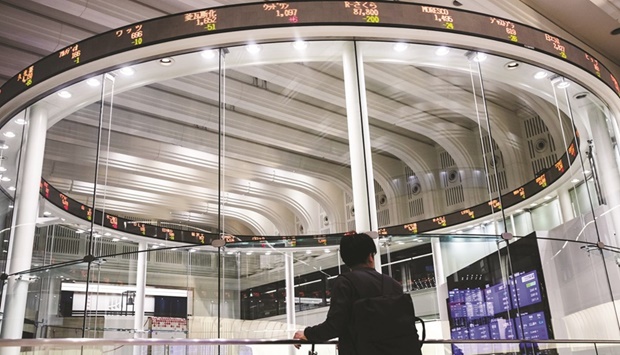Asian markets mostly fell yesterday as traders resumed their Ukraine-fuelled selling after the previous day’s bounce, with data showing US inflation at a 40-year high adding pressure on the Federal Reserve to ramp up interest rates.
Bets on a more aggressive approach by the Fed to rein in runaway prices added to nervousness on trading floors, while the failure of high-level talks between Moscow and Kyiv to de-escalate the war also helped torpedo a brief rebound in equities.
However, while oil rose it was well off the 14-year highs touched at the start of the week as governments embark on a diplomatic push to replace the output erased by strict sanctions and an embargo on Russian exports.
While the war in eastern Europe continues to rage, investor focus turned to the release Thursday of figures showing US inflation hit 7.9% in February, the highest since January 1982.
The reading comes just ahead of the Fed’s next policy meeting, where it is expected to announce the first of what could be up to seven interest rate hikes this year.
While a phase of tightening is certain, speculation has been rife about how many and how steep the rises will be.
The war has given officials an extra headache as the surge in oil markets will add upward pressure to consumer prices, though the bank must tread a fine line between fighting inflation and trying to prevent a recession.
“The headline print was a 40-year high, reflecting higher gasoline, food and shelter costs.
And now with energy prices on the rise following Russia’s invasion of Ukraine and sanctions, expectations are for inflation to rise even more,” said National Australia Bank’s Rodrigo Catril.
The “net takeaway is that US inflationary pressures are proving to be more persistent and expansive, increasing the pressure on the Fed to lift the funds rate and cool the economy”.
US Treasury Secretary Janet Yellen admitted rising prices were a problem and annual inflation would probably “remain very uncomfortably high”. Also on Thursday the European Central Bank hiked its inflation forecast for the year and slashed its economic growth outlook while taking a more hawkish stance on policy.
The prospect of higher US borrowing costs — and Japan unlikely to hike any time soon — has spurred a rally in the dollar to a more than five-year high of 116.81 yen.
That is despite the Japanese unit usually outperforming in times of crisis owing to its value as a safe haven.
All three US indexes ended in the red, having enjoyed a strong burst higher the day before and Asia followed suit after its own advance on Thursday, though early losses were pared or reversed in some places.
Tokyo lost more than 2%, while Hong Kong slipped 1.8% with Sydney, Seoul, Taipei, Manila, Jakarta, Mumbai, Kuala Lumpur and Wellington also in the red.
But Shanghai, Bangkok and Singapore squeezed out gains, while London, Paris and Frankfurt opened higher.
Stephane Michel at Federated Hermes saw some positives.
“Despite markets suffering their worst start in memory, they do feel like they’re trading in an orderly, albeit volatile, manner with support and tentative buying at cheaper levels,” he said in a commentary.
“Any positive rumours or announcement is met with enthusiasm and FOMO (Fear of Missing Out) and buy the dip have been such good performers as investment strategies through the previous crises.
“Occasionally, however, we do get reminded of the prospects of military escalation, stagflation, supply chain disruption, sanctions, energy blockades etc and we move lower still.
In Tokyo, the Nikkei 225 closed down 2.1% to 25,162.78 points; Hong Kong Hang Seng Index ended down 1.6% to 20,553.79 points and Shanghai Composite closed up 0.4% to 3,309.75 points yesterday.

An electronic ticker displays share prices at the Tokyo Stock Exchange. The Nikkei 225 closed down 2.1% to 25,162.78 points yesterday.


